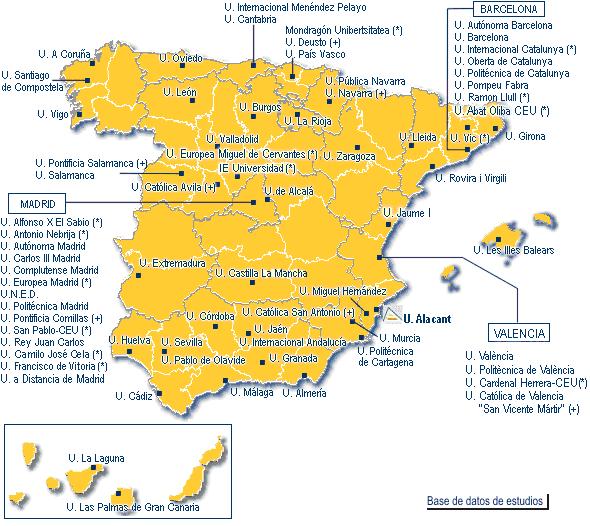Modelos de formación de clústers industriais: revisión das ideas que os
Contido principal do artigo
Resumo
Palabras chave
Detalles do artigo
Citas
ALBORS GARRIGÓS, J.; HIDALGO NUCHERA, A. (2012). “Relaciones de gobernanza e innovación en la cadena de valor: nuevos paradigmas de competividad”, Revista Europea de Dirección y Economía de la Empresa, 21 (2), pp. 205-214.
BAPTISTA, R.; SWANN, P. (1998): “Do Firms in Clusters Innovate More?”, Research Policy, 27 (5), pp. 525- 540.
BOIX, R.; LAZZERETTI, L. (2012): “Las industrias creativas en España: una panorámica”, Investigaciones Regionales, 22, pp. 181-206.
CROUCH, C.; FARRELL, H. (2001): “Great Britain: Falling Through the Holes in the Network Concept”, Local Production Systems in Europe: Rise or Demise, pp. 154-211.
CROUCH, C.; LE GALÉS, P.; TROGILIA, C.; VOELZKOW, H. (2001): Local Production System in Europe: DOERINGER, P.B.; TERKLA, D.G. (1995): “Bussines Strategy and Cross-Industry Clusters”, Economic Developtment Quarterly , 9 (3), pp. 225-237.
ENRIGHT, M.J. (1996): “Regional Clusters and Economic Development: A Research Agenda”, en U.H. Staber, N.V. Schaefer y B. Sharma [ed.]: Business Networks: Prospects for Regional Development. Berlin: Walter de Gruyter.
ENRIGHT, M.J.; FFOWCS-WILLIAMS, I.; Nolan, A. (2001): Local Partnership, Clusters and SME Globalisation. (OECD Workshop Paper). <http://www.oecd.org>.
ESCALONA ORCANO, A.I.; FRUTOS MEJÍAS, L.M.; LOSCERTALES PALOMAR, B.; SÁEZ PÉREZ, L.A. (2013): “Los clusters creativos como herramientas de desarrollo local. El cluster de Teruel”. Smart Regions for a Smarter Gowth Strategy: New Challenges of the Regional Policy and Potentials of Cities to Overcome a Worlwide Economic Crisis. Oviedo.
FESER, E.J. (1998): “Old and New Theories of Industry Clusters”, en M. Steiner [ed.]: Clusters and Regional Specialisation: On Geography, Technology and Networks, pp. 18- 40. London: Pion.
IAMMARINO, S.; MCCANN, P. (2006): “The Structure and Evolution of Industrial Clusters: Transactions, Technology and Knowledge Spillovers”, Research Policy, 35 (7), pp. 1018-1036.
ISAKSEN, A.; HAUGE, E. (2002): “Regional Clusters in Europe”. Observatory of European SMEs 2002, 3. Luxembourg: Office for Official Publications of the European Communities.
KRUGMAN, P, (1992): Geografía y comercio. Barcelona: Bosch.
MARKUSEN, A. (1996): “Sticky Places in Slippery Space”, Economic Geography, 72 (3), pp. 293- 313.
MARSHALL, A. (1890): Principles of Economics. London: Macmillan.
MARTIN, R.; SUNLEY, P. (2001): “Rethinking the ‘Economic’ in Economic Geography: Broadening Our Vision or Losing Our Focus?”, Antipode, 33 (2), pp. 148-161.
MARTIN, R.; SUNLEY, P. (2003): “Deconstructing Clusters: Chaotic Concept or Policy Panacea?”, Journal of Economic Geography, 3 (1), pp. 5-35.
MCDONALD, F.; HUANG, Q.; TSAGDIS, D.; TÜSELMANN, H.J. (2007): “Is There Evidence to Support Porter-Type Cluster Policies?”, Regional Studies, 41 (1), pp. 39-49.
MICHELINI, J.J.; MÉNDEZ, R. (2013): “Creative Industries, Spatial Contrasts and Urban Governance in Madrid”, Revista de Geografia e Ordenamento do Território, 1 (3), pp. 143-170.
PORTER, M.E. (1991): La ventaja competitiva de las naciones. Buenos Aires: Vergara.
PORTER, M.E. (1998a): “Location, Clusters and the New Microeconomics of Competition”, Business Economics, 33 (1), pp. 7-17.
PORTER, M.E. (1998b): Clusters and Competition: New Agendas for Companies, Goverments, and Institutions. (Harvard Business School Working Paper, 90-080). Boston, MA: Harvard Business School Press.
PORTER, M.E.(1998): “Clusters and the New Economics of Competition”, Harvard Business Review, 76 (6), pp. 77- 90.
RAINES, PH. (2000): Developing Cluster Policies in Seven European Regions. (Regional and Industrial Policy Research Paper, 42). Glasgow: European Policies Research Centre.
RAINES, PH. (2001): Local or National Competitive Advantage? The Tensions in Cluster Development Policy. (Regional and Industrial Policy Research Paper, 43). Glasgow: European Policies Research Centre.
ROELANDT, T.J.A..; DEN HERTOG, P. (1998): Cluster Analysis and Cluster Based Policy in OECD Countries: Various Approaches, Early Results and Policy Implications. (Draft Synthesis Report on Phase 1, OECD-Focus Group on Industrial Clusters).
ROELANDT, T.J.A.; DEN HERTOG, P. (1999). “Cluster Analysis and Cluster Based Policy Making in OECD Countries: An Introduction to the Theme”, en OECD: Boosting Innovation: The Cluster Approach, pp. 9-23. Paris: OECD.
ROSENFELD, S.A. (1997): “Bringing Business Clusters Into the Mainstream of Economic Development”, European Planning Studies, 5 (1), pp. 3-23.
SIMMIE, J.; SENNETT, J. (1999): “Innovation in the London Metropolitan Region”, en D. Hart, J. Simmie, P. Wood y J. Sennett: Innovative Clusters and Competitive Cities in the UK and Europe. (Oxford Brookes School of Planning Working Paper, 182). Oxford: Oxford Brookes School of Planning.
SWANN, P.; PREVEZER, M. (1996): “A Comparison of the Dynamics of Industrial Clustering in Computing and Biotechnology”, Research Policy, 25 (7), pp. 1139-1157.
VAN DEN BERG, L.; BRAUN, E.; VAN WINDEN, W. (2001): “Growth Clusters in European Cities: An Integral Approach”, Urban Studies, 38 (1), pp. 185-205.
Artigos máis lidos do mesmo autor/a(s)
- Fernando BLANCO SILVA, Alfonso LÓPEZ DÍAZ, A TRAMITACIÓN AMBIENTAL DE NOVOS ESTABLECEMENTOS NA COMUNIDADE AUTÓNOMA GALEGA DESPOIS DA LEI 9/2013 DO EMPRENDEMENTO E DA LEI 21/2013 DE AVALIACIÓN AMBIENTAL , Revista Galega de Economía: Vol 25 No 3 (2016)






